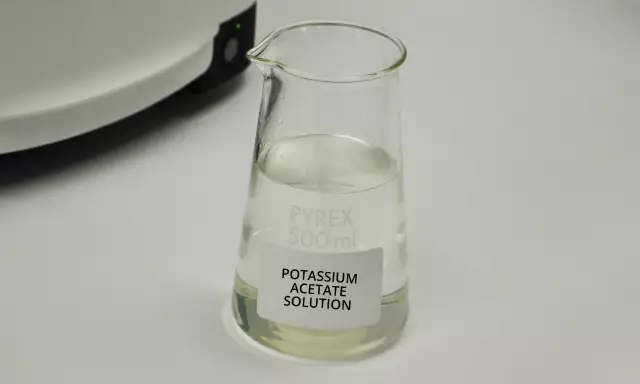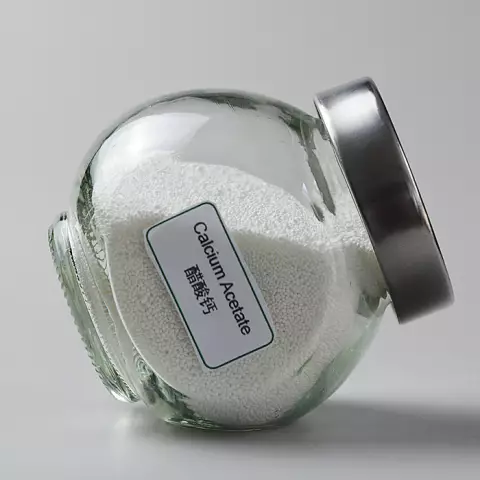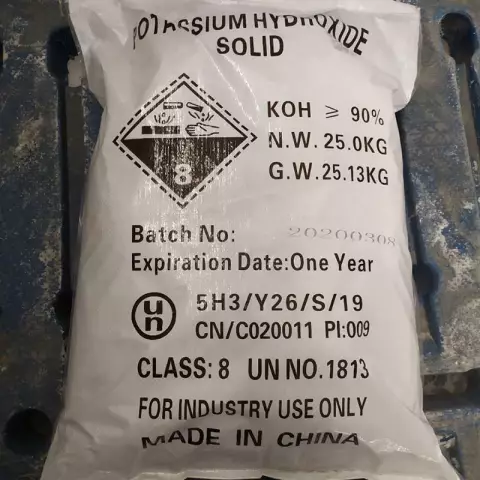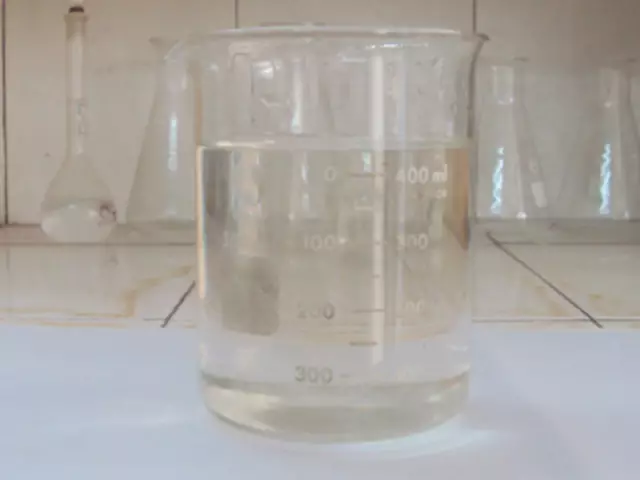- Author Rachel Wainwright [email protected].
- Public 2023-12-15 07:39.
- Last modified 2025-11-02 20:14.
Potassium acetate

Potassium acetate is one of the acetic acid salts.
Obtaining potassium acetate and its properties
Potassium acetate appears as white or colorless crystals with a slightly alkaline taste. Crystals are very hygroscopic and in the open air, under the influence of water vapor, they quickly spread out. Crystals practically do not dissolve in ether, but are readily soluble in water with the formation of a potassium acetate solution.
In terms of its toxicity, potassium acetate corresponds to acetic acid. Possesses pronounced preservative properties, due to which it prevents the development of pathogenic fungi and bacteria.
Potassium acetate, as mentioned, is the salt of acetic acid. Therefore, it is obtained by reacting potassium hydroxide or carbonate with an acetic acid solution. The reaction for obtaining potassium acetate can be written as follows:
K 2 CO 3 + 2CH 3 COOH = 2 CH 3 COOK + H 2 CO 3
Carbonic acid obtained as a result of this reaction is an unstable substance that decomposes almost instantly into carbon dioxide and water. Therefore, the end product of the reaction is an aqueous solution of potassium acetate, which can be evaporated to obtain a pure substance in the form of crystals.
Potassium acetate use
In the food industry, crystals and potassium acetate solution are used as preservatives and acidity regulators. With prolonged storage, the acidity of any product begins to change. To prevent this, potassium acetate is used, which is called the food additive E-261. The following names are synonyms for potassium acetate: potassium acetate, potassium diacetate, and others.
Most often, potassium acetate is used in the preparation of various fruit and tomato sauces, in cheese making and baking. Also, this food additive is widely used in pickling tomatoes and cucumbers. Thanks to its use, the sharp sour taste of the finished product, due to the use of acetic acid, is softened.
Potassium acetate is also used in pharmacology. It is found in some diuretic medicines. In addition, due to its ability to decompose into bicarbonates and thereby reduce the overall level of acidity, potassium acetate solution is used in the complex therapy of diabetic ketoacidosis.

Potassium acetate is also widely used in the textile industry and in the production of feed for farm animals.
The effect of potassium acetate on the human body
Potassium acetate is allowed to be used as a food additive without any restrictions only in Ukraine and Russia. In all other European countries and in the United States, this substance is considered far from safe and therefore its use is sharply limited.
It is not advisable to eat foods containing potassium acetate for people suffering from diseases of the gallbladder, kidney and urinary tract and cardiovascular system.
With great care, such products can be consumed by people with diseases of the gastrointestinal tract, as well as those who suffer from various allergic diseases and / or cannot tolerate acetic acid.
In the manufacture of products intended for baby food, the use of potassium acetate is strictly prohibited, however, as well as acetic acid. Therefore, if you see on the packaging with baby puree or juice that they include the food additive E-261, then you should refuse to buy such products.
A safe daily intake of potassium acetate has not been established, so there are no restrictions on its use in Russia.
Found a mistake in the text? Select it and press Ctrl + Enter.






